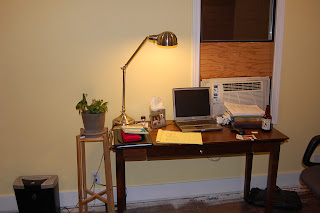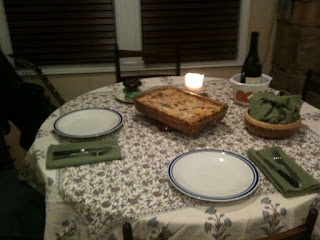After the bush was pruned we thought it might be nice to remove the grass from around the base of the rose bush and add a little mulch. Then I decided I wanted to use the process of "sheet mulching" to reduce the amount of lawn in the front yard and add some visual interest beyond the one ailing rose bush awkwardly growing against the chain-linked fence.
You might ask, "What is sheet mulching?" I recently attended a presentation put on by a Seattle Tilth representative and she introduced me to the concept. If you have an area of your yard that is grass but you want it to be a planted bed instead, you can cover it with cardboard or several layers of newspaper (not the shinly ads but normal newsprint) and then spread mulch over the top. The cardboard and newspaper will prevent the grass from growing up under the mulch and the grass will eventually die and decompose, as will the newspaper and cardboard and it will all contribute to a nutrient rich soil for your plants!
Luckily we had recently had some stumps ground in the front and back yards so I had a large pile of mulch! This started a few weekends ago and finished up yesterday. The pictures just do not do it justice. Yet another reason to come visit in person.
 This sad looking rose bush was very overgrown. We think it is a climber and I contemplated buying a trellis but it seems very sick so may come out if it doesn't recover this year. Keep your fingers crossed and let me know if you have any tips for sick roses!
This sad looking rose bush was very overgrown. We think it is a climber and I contemplated buying a trellis but it seems very sick so may come out if it doesn't recover this year. Keep your fingers crossed and let me know if you have any tips for sick roses!Sheet Mulching Process...
Ta Da!
Front row: black eyed susans, dinosaur plant (name we made up because I don't remember the name), white heathers, clematis (on the bamboo stick) ; Middle row: succulents in stone, rosemary, lavender; Back row: purple irises, purple hebe bush. Not pictured: wildflower seeds that are just starting to push out of the ground.
Alpine strawberry (in pot), marionberry canebush (this one will spread like crazy), white heather, cranberry bush.
Now for that lawn....

































